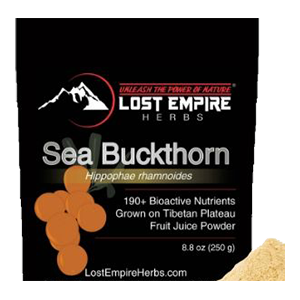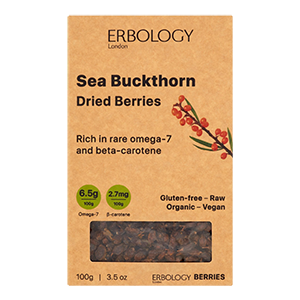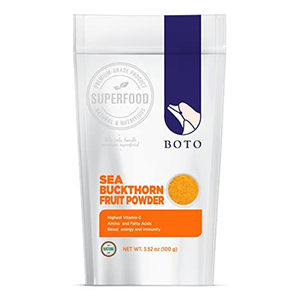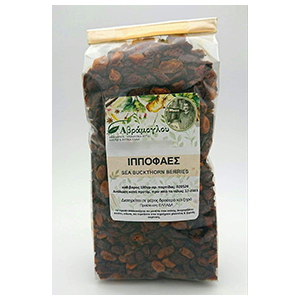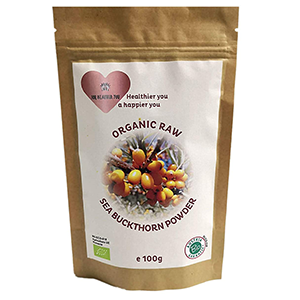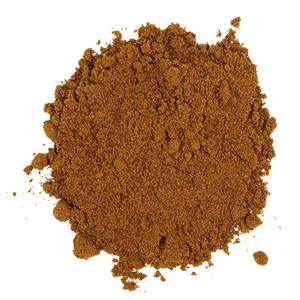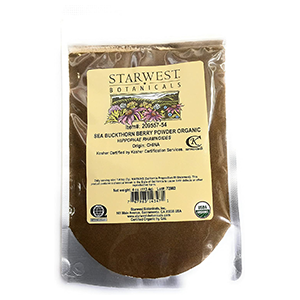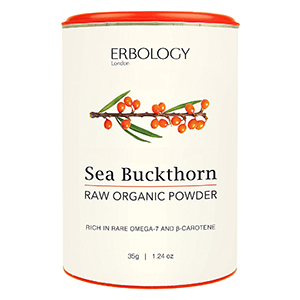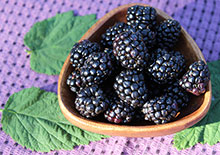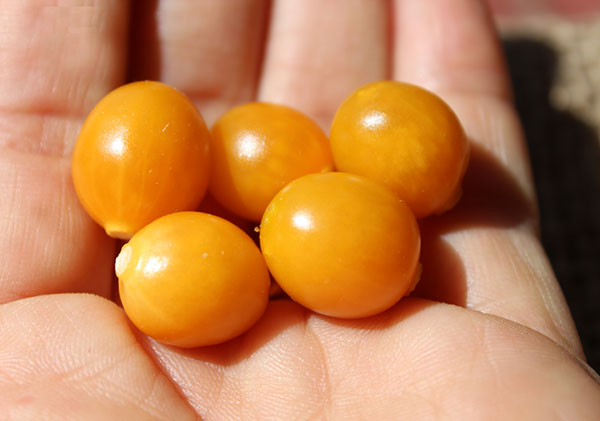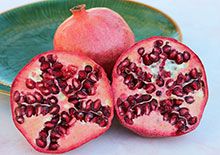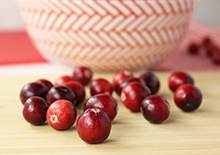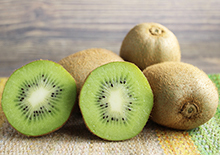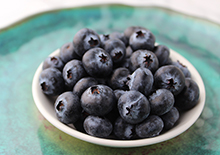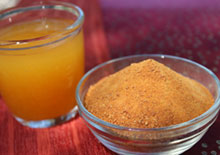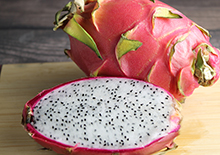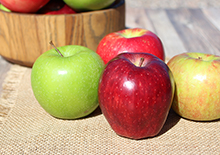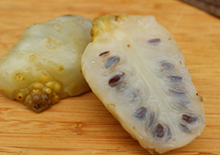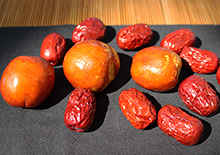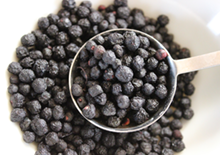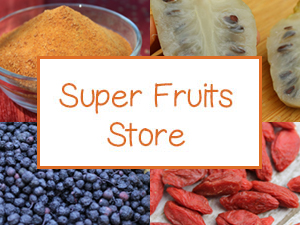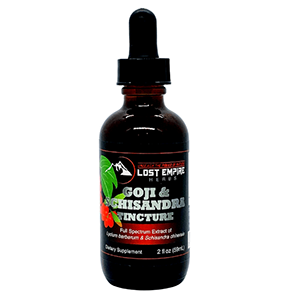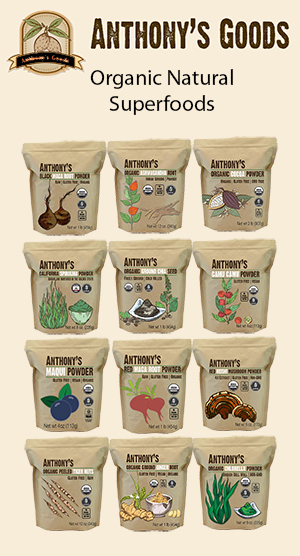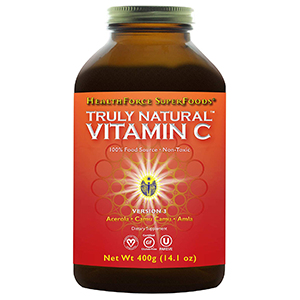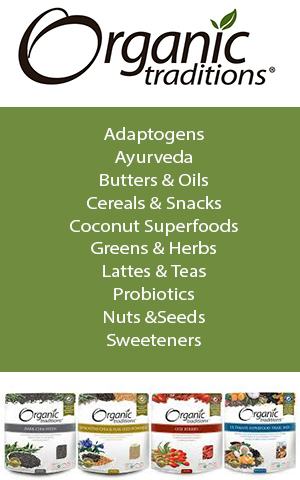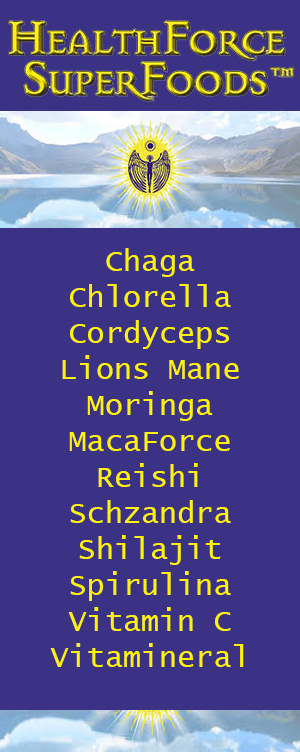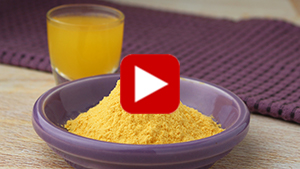- Home
- Super Fruits
- Sea Buckthorn Berry
Sea Buckthorn Berry Powder, Why It's a Top Superfruit
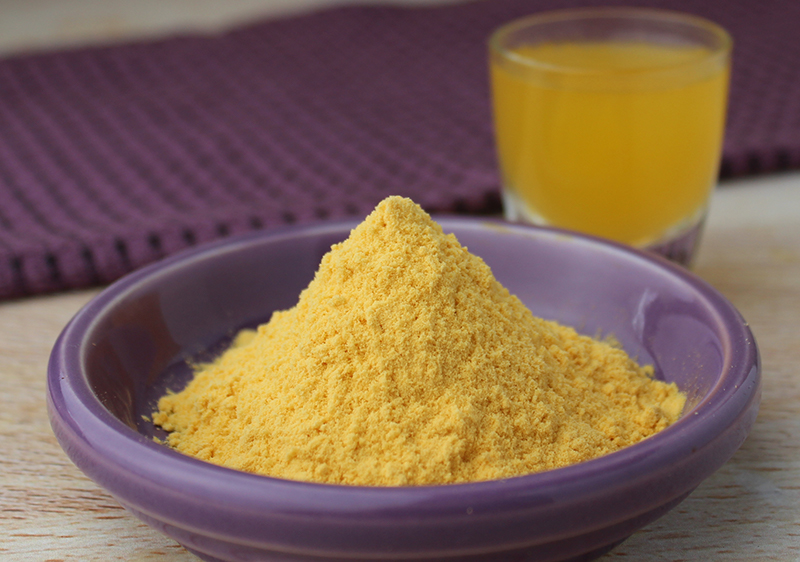
Sea buckthorn does not always grow by the sea, nor is it a type of seaweed or related to "true buckthorns" of the genus Rhamnus. It is from the genera Hippophae, a small genus of "sea buckthorn" species.
The most common and widespread is the species Hippophae rhamnoides which currently includes about eight different subspecies that extend across many countries of the Northern Hemisphere.
Sea buckthorns are deciduous shrubs with silvery green leaves, densely packed bright yellow-orange berries and thick branches with long dispersed thorns. They are native to Eurasia and an extensive territory ranging from the Atlantic coast of Europe across Central Asia and parts of Russia, Tibet, Mongolia, and China.
The name Hippophae is derived from the Greek word hippo (horse) and phaos (shining), meaning "shining horse." This descriptive term is proposed to come from legends about sea buckthorn and its noticeably beneficial effect on horses who grazed on the wild shrub.
Also commonly referred to as seaberry, the plants range in size from a small bush to a medium-sized tree and need full sun to completely develop their cluster of berries. And, as the name implies, they tend to thrive in coastal environments but also uniquely adapt to a range of different climate zones, from deserts to sub-arctic regions.
The edible berries, a little smaller than blueberries, are regarded as a superfruit variety because of their high nutrient-rich profile. They are most well-known for their fat content which is often pressed and sold as "sea buckthorn oil."
Sea buckthorn berry accumulates oil both in the flesh and in the tiny seed of the fruit, which interestingly looks similar to flaxseeds, also known for their polyunsaturated fatty acids. Its rich oil content and protective tough waxy skin give it the look and feel of a tiny water balloon.
The fruits after harvesting can be used fresh, dried whole (like tart raisins), powdered, juiced and pressed for their oil content.
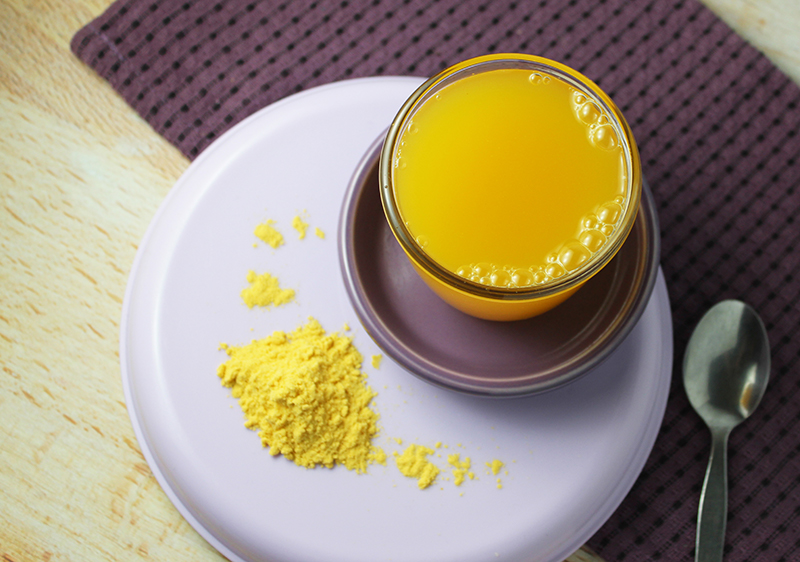
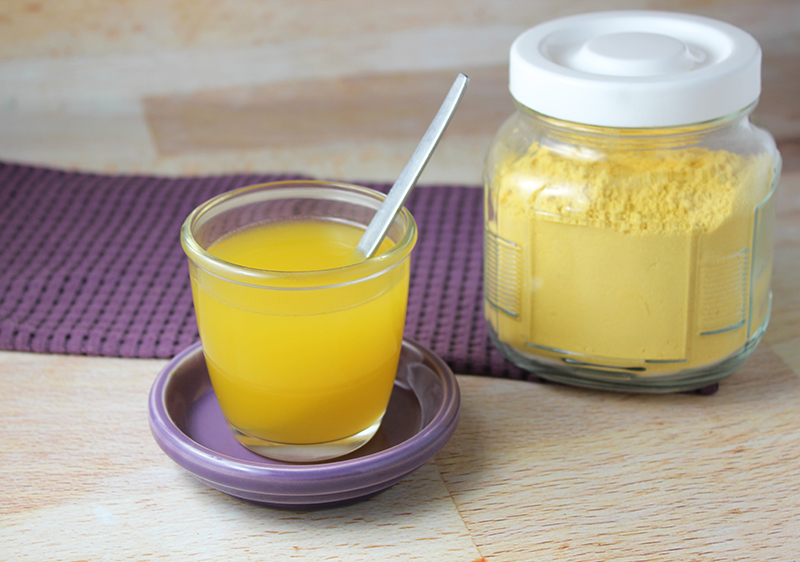
Sea Buckthorn Berry Nutrition
Called "the holy fruit of the Himalayas", sea buckthorn berry is highly revered for its nutritive value in many areas of the world indigenous to its growth. The berries are known to contain a unique composition of bioactive compounds like vitamin antioxidants, flavonoids, tocopherols, phytosterols, and fatty acids.
As a nutritional food supplement, sea buckthorn berries are frequently available as a powder made from either the whole dried berries or from the juice concentrate.
Often considered a "superfruit", powdered forms are typically used as a type of natural multivitamin.
Why might sea buckthorn berry powder be a highly nutritious option to consider including in your diet for additional fortification?
Good Source of Immune-Supporting Vitamin C
One of the major benefits of sea buckthorn berry and its fruit powder concentrate is that it is a potent source of food-based immune-supporting VITAMIN C. This is evidenced by its mouth-puckering sour tart taste.
Fresh berries vary in vitamin C content, but some research indicates about 400 mg/100 g. This amount is known to degrade slightly after storage. (Source)
Vitamin C amounts depend on the specific product and how it is processed. Generally, fruit juice powders are of course more concentrated in vitamin C because they lack the fiber and some of the fatty acid components compared to the dried fruit. These types, a vibrant bright yellow color, most readily dissolve into water and can be a convenient way to help supply your daily vitamin C requirements.
Other options include the fruit berry powders which are created from grinding the dried berries. These forms, in our opinion, are best when mixed into drinks or smoothies.
Many health experts recommend whole food-based vitamin C sources, like sea buckthorn berry powders, over synthetic ascorbic acid supplements and powders because they're reported to be safer to consume on a regular basis.
Not only is vitamin C an immune-enhancing antioxidant, it is an essential nutrient needed for many bodily functions. Minor deficiency of this vital dietary element can cause various symptoms like easy bruising, weak connective tissues, varicose veins, joint pain, mental weariness, and general fatigue.
Other dietary alternatives to consider for their high vitamin C content may also include superfruits like camu camu, acerola cherry, amalaki, and kakadu plum.
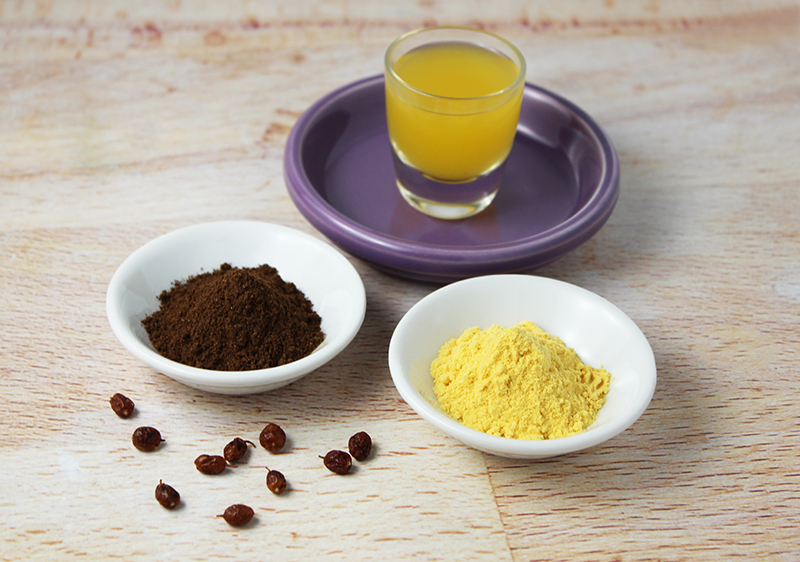
Sea Buckthorn Berry Carotenoids, Fats and Other Nutrients
Seaberry fruits are rich in the antioxidant-promoting CAROTENOIDS, including beta-carotene, gamma-carotene, lycopene, and zeaxanthin. These carotenoid pigments are what contribute to the yellow-orange color of the berry.
Along with vitamin C and vitamin A, sea buckthorn pulp in some research was shown to contain much higher amounts of calcium, iron, riboflavin, niacin, pantothenic acid, and vitamin B6 compared to other fruits like mango, apricot, banana, orange, and peach.
Known to contain the B vitamin folic acid, it is also claimed to be a plant-based source of vitamin B12 due to a "symbiosis with B12-synthesizing bacteria." However, it is not generally considered a reliable source of this nutrient for vegans or vegetarians.
In some research studying sea buckthorn berry consumption on humans, it was shown that total flavonol content, can average somewhere between bog bilberry and cranberry. They are composed mainly of the flavonoids kaempferol and quercetin, and the recently studied beneficial compound called isorhamnetin.
As mentioned, the fruits are especially known for their high amount of fat content. Both the seed and the fruit are a source of vitamin E antioxidants tocopherols and tocotrienols. Likewise, they are proposed to be one of the only known plants to contain all four omega fatty acids: linolenic acid (omega-3), linoleic acid (omega-6), oleic acid (omega-9) and palmitoleic acid (omega-7).
Sea buckthorn oil pressed from the seeds and/or berries is highly valued for topical skincare treatments and consumed for its unique healthy fatty acid profile.
When it comes to fruit powders and fruit juice concentrates, however, only trace amounts of these fats are present.
Sea Buckthorn Berry Benefits as a Permaculture Plant
Sea buckthorn is a very adaptable and hardy species that is consistently productive with a high yield of berries and one that is relatively pest-free.
Other superfruit varieties used commercially, like acai and camu camu, are less sustainable because they have a much smaller range of growth and generally restricted to specific tropical climate zones. Many sea buckthorns can grow in climate zones 3-8, spreading from seashores to the higher elevations, like the Himalayan plateau.
In fact, many of the sea buckthorn species have a lot to offer as a permaculture plant and are often utilized for such purposes to restore degraded soil with their nitrogen-fixing qualities. (*)
The Hippophae genus of sea buckthorns is known for its extensively spreading root system and is sometimes planted to inhibit things like soil erosion as well as to enrich the land.
Certain varieties are more suited to distinctive geographical locations than others. For example, the Hippophae rhamnoides L turkestanica species, has become an important multipurpose plant to help increase soil fertility in regions of Northern Pakistan. It has also been used extensively in places like China and Mongolia in reforestation projects. (*)
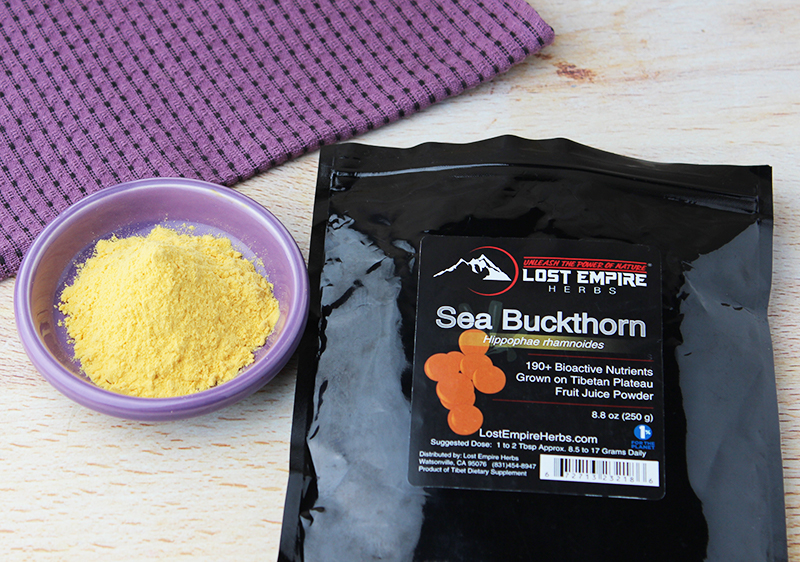
How to Use
Utilized for centuries by cultures native to sea buckthorn habitats, the fresh fruit has been a traditional health-enhancing food source in many parts of the world such as Scandinavia, Mongolia, Russia, and Eastern Europe. Some customary culinary uses for the raw berries include preserves, syrups, sauces, liquors, and marinades.
Sea buckthorn berry in other countries is frequently available as a bulk powdered nutritional food supplement. As mentioned, powders are either made from the whole dried berries or from the juice concentrate. There are several quality brands that are wildcrafted and/or certified organic.
Juice powders easily dissolve into water or juice, whereas fruit powders are more palatable in blended into drinks or smoothies. Both can be used in numerous recipes and desserts.
It is best to follow the recommended dosage on product labels when using it for nutritional fortification.
Precautions:
Seek the advice of a qualified health professional before using sea buckthorn berry if you are pregnant, nursing, taking medications or if you have a serious medical illness.
Shop Related Products (About Affiliates & Amazon Associate Paid Links)
Affiliate Disclaimer: This section contains affiliate product links. If you make a purchase through our recommended links, we receive a small commission at no additional cost to you. Thanks for the support.
